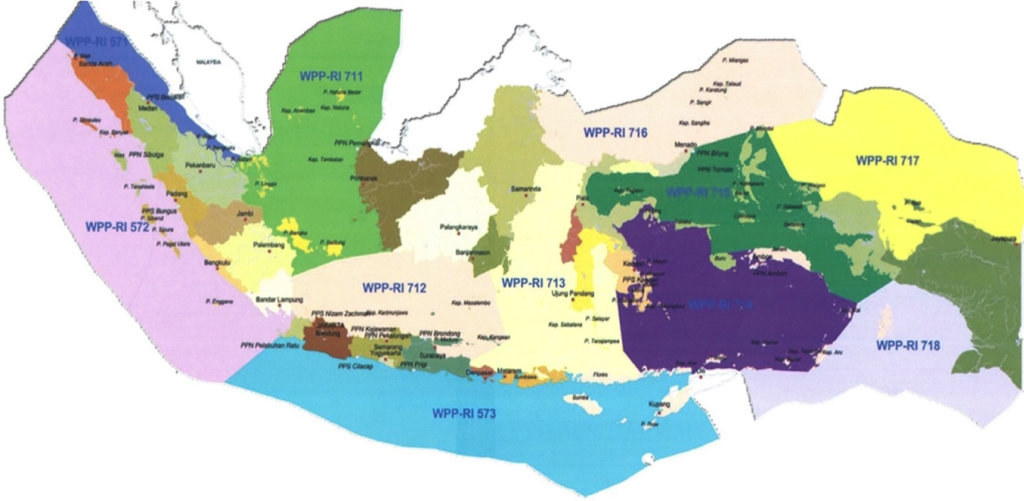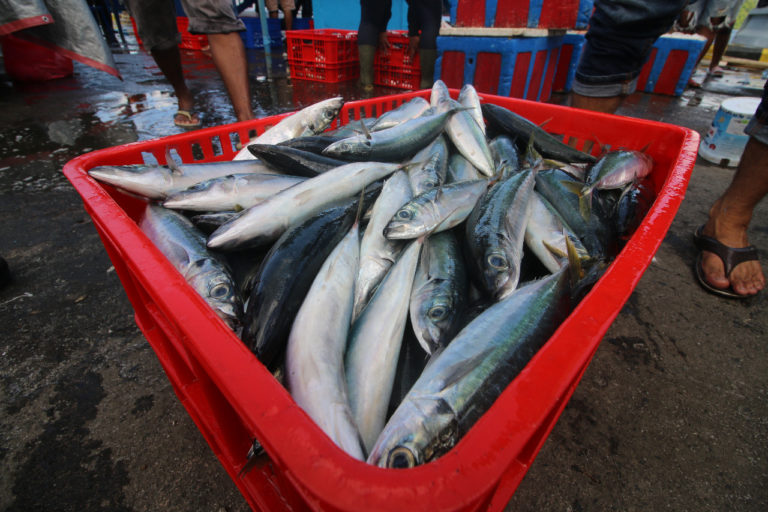- Indonesia is evaluating the health of its marine fisheries in 11 fishing zones around the country.
- The assessment is expected to help policymakers create a more sustainable and better-planned marine capture fisheries model to be applied across the country’s fishing zones.
- Indonesia is one of the world’s biggest producers of marine capture fisheries, and also has high marine biodiversity.
JAKARTA — Indonesia is assessing commercially valuable fish populations throughout its waters in a bid to improve the sustainable management of one of the world’s biggest fisheries.
The country’s fisheries ministry is carrying out evaluations of population health in the archipelago’s 11 fishing zones. The findings are expected to help policymakers identify areas with fish populations that are either healthy, recovering, or overfished.
Indonesia is the second-biggest marine capture producer, after China, harvesting 84.4 million metric tons of seafood in 2018, according to the U.N.’s Food and Agriculture Organization (FAO). The country’s waters support some of the highest levels of marine biodiversity in the world, and the fisheries industry employs about 12 million Indonesians.
“This assessment is a very crucial first step to make many following decisions,” Annastasia Rita Tisiana, an official with the ministry’s implementation working unit, said in a July 27 webinar.


Annastasia said the fish stock health analysis would help the ministry decide fishing zones allowed for large-scale and traditional fishing, and which areas to protect for conservation due to overfishing. She added the data would determine harvest quotas for each type of fish, the number of boats and the kinds of gear allowed to operate in each fishing zone.
Annastasia said her team had been collecting and verifying data for the past three months, but didn’t say when they expected to complete their evaluation and publish their findings.
“Collecting the data has not been easy because there are data differences and they’re stored all over the place,” she said.
However, Annastasia said the fisheries ministry was already creating a new management model to be tested in several fishing zones. She said the proposal was to designate some zones as fishing industry and nursery grounds.
“We’re going to try to manage some fishing zones using our concept of ‘measured capture fisheries,’” Annastasia said.
The quota-based fisheries concept is also aimed at closing the wealth disparity between fishing communities across Indonesia, said Muhammad Zaini, the ministry’s head of marine capture fisheries. Industry observers note that the fishing industry in western Indonesia is far more developed than in the country’s east, yet many boats often operate in the latter waters. Much of the catch from all over Indonesia is still landed in ports on the main western island of Java Island.
Zaini cited the example of boats from the north coast of Java, home to the country’s biggest fleet, going east to fish in the Arafura Sea, the waters between New Guinea and Australia, then landing their catch back in Java. Zaini also urged traditional and small-scale fishers to join operators of bigger fishing boats to help develop the country’s fishing industry.
The government has worked for several years to boost fish stocks, primarily under former fisheries minister Susi Pudjiastuti, who was in office from 2014 to 2019. In 2016, the National Commission for Fisheries Resources Research (Komnas Kajiskan) reported that Indonesian fishing zones were either over or fully exploited. By 2018, official estimates for the country’s total fish stocks showed a 5% increase from the previous two years, which fisheries experts largely attributed to Susi’s efforts to keep illegal foreign fishing boats out of the country’s waters.
“We’re trying to resolve this disparity in the fisheries sector with this measured fishing concept,” Zaini said.

FEEDBACK: Use this form to send a message to the author of this post. If you want to post a public comment, you can do that at the bottom of the page.